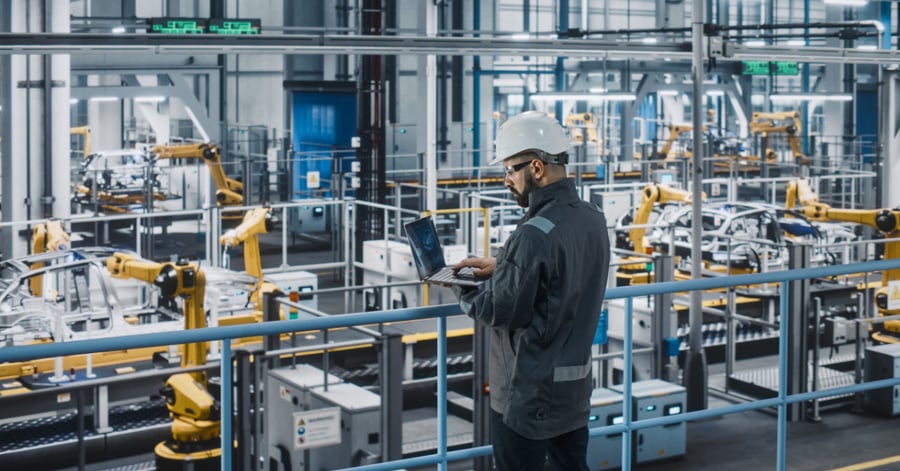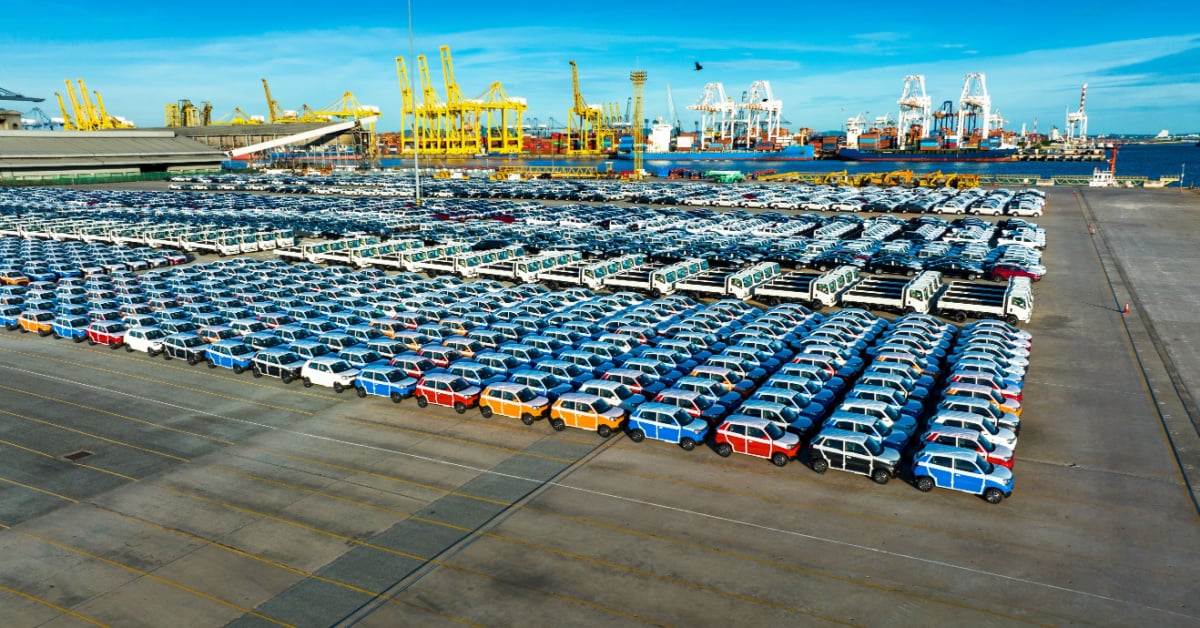

The automotive industry, just like any other, has its fair share of challenges. Supply chain disruptions have always been a nightmare throwing a wrench into their operations. From geopolitical uncertainties to natural disasters, and supplier disruptions to continuously shifting customer demands, the environment is intricate and dynamic. It's a constant juggling act to be prepared for the unexpected and establish resilient supply chains that can roll with the punches, quickly adapting to disruptions and keeping the flow of materials and components running. It's all about being agile and staying one step ahead in this fast-paced industry. This is where Automotive ERP come into play.
Challenges Plaguing the Automotive Supply Chain
The COVID-19 pandemic hit the automotive industry hard. With lockdowns, travel restrictions, and supply chain disruptions, it brought the production line to a halt and sent demand plummeting. Automotive suppliers were left grappling with workforce shortages, cash flow crunches, and chaotic logistics. Plus, they had to navigate the uncharted territory of ensuring employee safety and adhering to the changing health guidelines.
And if that wasn't enough, the semiconductor chip shortage threw another curveball at automotive suppliers. These tiny chips, vital for various vehicle systems like infotainment and driver assistance, suddenly became scarce. Blame it on skyrocketing demand from consumer electronics or the disruptive waves hitting the supply chain - the result was the same: production cuts, delayed deliveries, and frustrated customers. The ripple effect of this shortage heaved through the industry, impacting production capacity and taking a toll on revenue.
Automotive suppliers have to navigate a complex supply chain. Coordinating operations, managing inventory, and ensuring timely deliveries across this complex network through multiple tiers of suppliers, and countless OEMs (Original Equipment Manufacturers), is like orchestrating a grand symphony where every note has to be in perfect harmony. They play an important role in the success of OEMs. However, they grapple with the challenges around visibility gaps, communication breakdowns and operational efficiencies. It leads to aggravating delays and disruptions. This is where Automotive ERP can make a difference.
Economic conditions, shifting preferences, and emerging technologies keep automotive suppliers on their toes. Moreover, customers nowadays have high expectations, seeking customization and personalized experiences. Striving to meet these demands while maintaining seamless operations and cost control is a tough task.
As if things weren't complicated enough, automotive suppliers must navigate a labyrinth of regulations and compliance requirements. Non-compliance can spell disaster, leading to penalties, product recalls, and a tarnished reputation. It's a high-stakes game that requires meticulous attention to detail and a constant eye on the ever-evolving regulatory landscape.
Being an automotive supplier is far from an easy task. However, those who can successfully navigate this challenging landscape are the ones who embrace digital technologies and construct robust supply chains capable of enduring the challenges.
According to Allied Market Research, the digital supply chain market (including automotive) is projected to grow to $13,679.00 million by 2030. Several factors are driving the market, including the increased demand for efficient order execution, the growing need for cloud-based supply chain management solutions, and the widespread adoption of industrial-grade digital technology. This is where ERP software can play a crucial role.
Unleashing the Power of Digital Technologies
These numbers are indicative enough that it’s time to gear up, strap in, and embark on the journey toward supply chain resilience. Here is how digital technology, such as Automotive ERP and ERP software, can help elevate the game.
Streamlining Operations with Digital Manufacturing
Searching for operational excellence, automotive suppliers can turn to digital manufacturing as their trusted allies. Powerful tools, such as process automation, inventory management systems, and supply chain management software, make the operations efficient. It paves the way for smoother and more cost-effective operations, optimizing their inventory levels and ensuring timely deliveries.
Enhancing Customer Experience
In today's customer-centric world, delivering a stellar experience is non-negotiable. Digital technologies open up a world of possibilities for automotive suppliers to understand OEMs and end-buyers on a deeper level through advanced analytics. This knowledge arms the suppliers to develop personalized products and services catering to the unique needs. Furthermore, by integrating real-time information on stock availability and production targets, suppliers can establish true connectedness across the entire value chain. The result? A seamless customer experience, from order placement to delivery, leaving customers delighted and loyal.
Agility in Response to Industry Changes
In the automotive industry, agility is the name of the game. With digital tools related to design, simulation, and testing, suppliers can quickly respond to evolving industry trends and customer demands. These technologies empower suppliers to adapt their production and raw material procurement plan in quick time. By embracing these digital tools, suppliers can accelerate time-to-market, stay ahead of the competition, and seize opportunities as they arise.
Improving Profitability and Efficiency
Profitability and efficiency are two sides of the same coin. Digital technologies offer a gateway to optimizing both aspects of the business. By providing real-time visibility into critical parameters, such as inventory levels, plant asset utilization, and energy consumption, these technologies empower suppliers with the insights needed to make data-driven decisions. They can identify and address potential profit leaks, maximize plant efficiency, and optimize resource allocation. What do suppliers get? Improved profitability, enhanced operational efficiency, and a stronger bottom line.
Gaining Competitive Advantage
In a crowded marketplace, differentiation is the key to success. Digitalization, powered by Automotive ERP, can constantly keep a tab on competition to benchmark against own performance metrics and make strategic and tactical adjustments.
Making the right choice
To unlock the full potential of digital transformation in the automotive industry, selecting the right ERP solution is crucial. One size does not fit all, and that's where Ramco Systems’ ERP solutions come into play. Unlike other generic ERPs, Ramco ERP is built for the auto-suppliers and handles licensing to implementation and service. It is the reason for 10+ automotive suppliers to implement Ramco enterprise-wide.
Take the case of Jamna Auto Industries, India's largest automobile parts manufacturer and a global leader in tapered leaf springs and parabolic springs. The company initially collaborated with Ramco Systems to undergo digital transformation at one of its plants. However, the remarkable success of this transformation prompted them to extend their partnership with Ramco to four additional plants!
Ramco's ERP software suite encompasses essential modules like Finance, Inventory, Sales, Production, and Maintenance, providing enhanced stock visibility, seamless data flow, and real-time tracking of sales and vehicles throughout the supply chain. By leveraging Ramco's user-friendly and innovative solutions, Jamna Auto achieved a paperless office environment, improved efficiency, and met the demands of its market and product strategies.
So, automotive suppliers, it's time to embrace the power of digital technologies and harness their transformative potential. The journey toward supply chain resilience starts now with the right ERP solutions.
Click here to know more about Ramco Systems Supply Chain Management solutions.
Frequently Asked Questions (FAQs)
Enterprise asset management (EAM) involves the management of mission critical assets of an organization throughout each asset's lifecycle. EAM is used to plan, optimize, execute, and track the needed maintenance activities with the associated priorities, skills, materials, tools, and information. The aim is to optimize the quality and utilization of assets throughout their lifecycle, increase productive uptime and reduce operational costs.
Enterprise asset management (EAM) involves the management of the maintenance of physical assets of an organization throughout each asset's lifecycle. EAM is used to plan, optimize, execute, and track the needed maintenance activities with the associated priorities, skills, materials, tools, and information.
The software helps in effective maintenance of assets through preventive, predictive, shutdown and breakdown maintenance strategies. The system also helps enterprises mitigate equipment risks by enhanced safety standards. The streamlined operations and improved asset performance helps organizations increase their investment effectiveness.
EAM is important because it helps organizations track, assess, manage and optimize asset quality and reliability. Asset intensive Organizations have hundreds, thousands, even millions of assets which needs to be maintained to maximize / optimize life of these assets to increase the return on investment.
The key features of effective EAM are:
- Work management.
- Maintenance Strategies (Preventive/ Predictive / Breakdown / Shutdown).
- Planning and scheduling.
- Supply chain management.
- Health and safety.
- Mobility.
- Analytics.
- Improved Asset Health at reduced cost through data driven maintenance Programs
- Complete visibilityon entire maintenance data across Equipment, across Models, across Branches to aid in analysis & decision making such as to Repair or Replace the Equipment
- Insightful analysis of Inspection Data to improve customer satisfaction
- Effective maintenance management enhanced by predictive maintenance and inbuilt analytics
- Increased reliability and safety, keeps complete track of all the inspections & calibration schedules
- Mobile Application enables users to execute work while “in the field” leading to minimized non-productive time and increased productivity and reduces duplication of work and human errors in recording information.
- Quick turnaround time through Actionable Notification & Alerts for every process in real time and accessible anytime and anywhere.
- Improved Regulatory Part of asset management involves the implementation of better O&M practices, which can significantly improve compliance.
Asset Intensive companies under the following Industries :
- Ports
- Cement and Mining
- Utilities
- Fleet Maintenance
- Equipment Rental
- Other Manufacturing
- Real Estate & Infrastructure
- Power Generation
Contact us for a meeting and schedule a demo
This differs on case to case basis, based on the type of installation and unique industry specific requirements. Contact us for a meeting and schedule a demo.
This differs on case to case basis, based on the type of installation and unique industry specific requirements. Contact us for a meeting and schedule a demo.
Stay Connected, follow us on LinkedIn / Twitter to know more about EAM Software latest trends.


